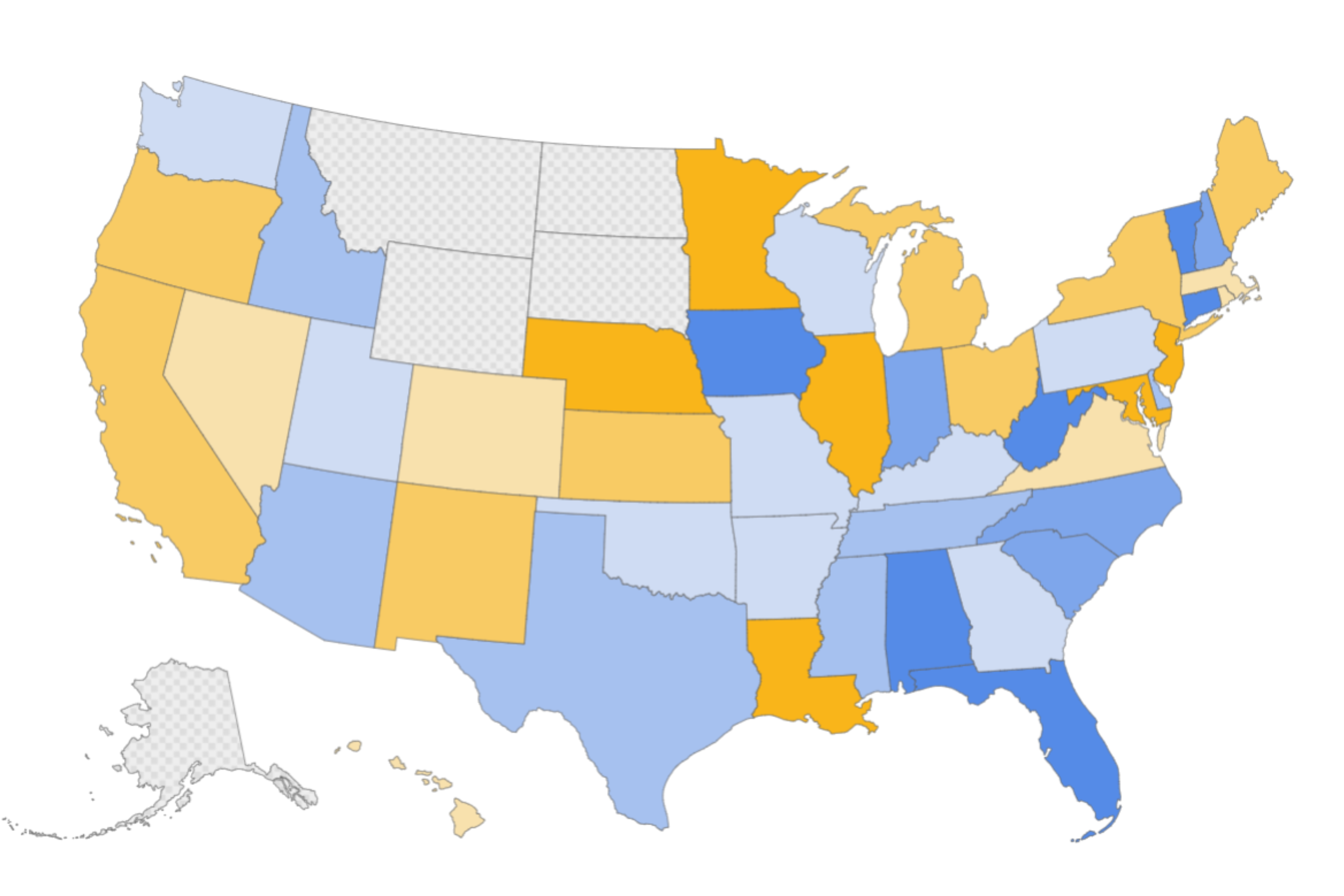Florida, Iowa and Connecticut were among the most popular states for high earners, according to an analysis of U.S. Census Bureau data.
A new study from the site HireAHelper.com used Census data to map the states where the top, middle, and bottom earners are fleeing to and from. It found high-income households are less likely to move than those in lower income brackets, but when they do, they are more inclined to relocate to a different state. In 2023, only 6.5 percent of the top earners moved, compared to 9 percent of the bottom 20 percent. The top 20 percent of earners were defined as those with an annua income of $150,000 or more.
Vermont Tops the List for High Earners
Vermont has emerged as the most popular destination for the top 20 percent of earners, with a net gain of 89 percent in this income bracket.
The state’s appeal to high-income individuals is attributed to its quality of life, natural beauty, and a growing reputation as a haven for remote work. “Vermont has become increasingly attractive to high-income earners, particularly those looking to escape the hustle and bustle of more crowded states,” Miranda Marquit, Hire A Helper’s spokesperson and consumer advocate told Newsweek.

Tim Graham/Getty Images
Other states that attracted a significant influx of wealthy households include West Virginia, Connecticut, and Iowa, with net gains of 69 percent, 65 percent, and 58 percent respectively. These states offer a combination of lower costs of living, tax benefits, and desirable lifestyles, making them attractive to high earners.
Economic Impacts of High Earners Moving
The migration of high-income individuals brings substantial financial resources to their new states, which can stimulate local economies. This influx often leads to increased demand for housing, services, and luxury goods, potentially driving up property values and living costs. Conversely, states losing high earners, such as California and New York, face economic challenges, including declining tax revenues.
In 2023, California and New York together lost $90 billion in income tax revenues due to the out-migration of wealthy residents. This trend is particularly impactful in states with high taxes and living costs, where the departure of high-income residents exacerbates economic disparities.
Marquit told Newsweek that, “A large influx of high earners can drive up housing prices, causing problems.” She noted that, “In Idaho, housing costs in some areas skyrocketed to the point that in one town, Hailey, they approved a camp in a city park while trying to figure out a solution because teachers and other professionals couldn’t afford to live in the community where they worked.”

Ed JONES/Getty Images
Marquit added that, “High earners might be more likely to ask for services and want to see some of the amenities they’re used to. In some cases, this can lead to more development. Additionally, bringing more high earners into a state can increase tax revenues that governments can use to invest in communities.” But she noted that while the demanded for amenities and services can create job growth, some jobs may be low paying.
Motivations Behind the Moves
The study also explored the reasons behind these moves. Marquit said, “High earners cite moving to become a homeowner as the number three reason for their move.” Owning a home was nearly five times more common among this group (11.6 percent of moves) than among the bottom 20 percent (2.5 percent of moves).
Marquit continued, “The top reason high earners cited was that they wanted upgraded housing, indicating that they already owned before moving. The second reason high earners cited was work-related. High earners often move first for other reasons, and moving for homeownership is consistently not at the top of the list.”
High earners were also more likely to move for new and better housing (18 percent) and job opportunities (12 percent).In contrast, lower-income Americans were more likely to move for cheaper housing, with 12 percent citing this as their reason for relocating. Health reasons and family considerations also played significant roles in their decisions to move.
The Broader Implications
The migration patterns of high and low earners not only affect the economies of individual states but also contribute to broader trends such as gentrification and poverty concentration. As high earners move into more affordable areas, they often drive up property values, making it difficult for lower-income residents to remain. Conversely, the movement of low-income individuals into states like Oklahoma can lead to the concentration of poverty in certain areas, with associated challenges such as increased crime, health issues, and educational disparities.
“The movement of Americans based on income is reshaping the demographic and economic landscape of the country,” Marquit said.
Do you have a story Newsweek should be covering? Do you have any questions about this story? Contact LiveNews@newsweek.com.
